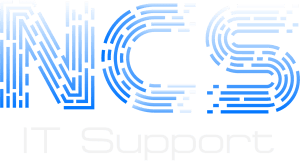Key Takeaways
- Remote work is on the rise and IT management plays a crucial role in optimizing it.
- Remote work offers benefits such as increased flexibility, but also poses challenges such as maintaining communication and collaboration.
- IT management can optimize remote work by ensuring cybersecurity and providing the right tools and technologies.
- Facilitating collaboration and communication among remote teams is essential for success.
- Effective remote work policies and guidelines, as well as measuring ROI, are important for achieving business efficiency.
The Benefits and Challenges of Remote Work
Remote work offers several advantages for both employees and employers. For employees, it provides the flexibility to work from anywhere, eliminates commuting time and costs, and allows for a better work-life balance. Studies have shown that remote workers are often more productive due to fewer distractions and a more comfortable work environment. Additionally, remote work can lead to cost savings for employers by reducing office space requirements and overhead expenses.
However, remote work also comes with its own set of challenges. Communication barriers can arise when team members are spread across different locations and time zones. Lack of supervision can make it difficult to ensure that employees are staying on task and meeting deadlines. Moreover, remote work poses cybersecurity risks as employees may be accessing sensitive company data from unsecured networks or devices.
The Role of IT Management in Optimizing Remote Work
IT management plays a crucial role in optimizing remote work by providing the necessary infrastructure, tools, and support. It is responsible for setting up secure remote access systems that allow employees to connect to company resources from anywhere. This includes implementing virtual private networks (VPNs) and multi-factor authentication to ensure secure access to company networks.
Furthermore, IT management is responsible for providing the right tools and technologies that enable effective remote collaboration and communication. This includes video conferencing software, collaboration platforms, and cloud storage solutions. IT management also plays a key role in ensuring the security and reliability of remote work systems by implementing robust cybersecurity measures, conducting regular system updates and maintenance, and monitoring for any potential vulnerabilities.
Ensuring Cybersecurity and Data Protection for Remote Workers
| Metrics | Description |
|---|---|
| Number of remote workers | The total number of employees working remotely |
| Number of cybersecurity incidents | The total number of cybersecurity incidents reported by remote workers |
| Percentage of remote workers trained in cybersecurity | The percentage of remote workers who have completed cybersecurity training |
| Number of data breaches | The total number of data breaches reported by remote workers |
| Percentage of remote workers using VPN | The percentage of remote workers who use a VPN to access company resources |
| Number of phishing attempts | The total number of phishing attempts reported by remote workers |
| Percentage of remote workers using multi-factor authentication | The percentage of remote workers who use multi-factor authentication to access company resources |
One of the biggest concerns when it comes to remote work is cybersecurity. Remote workers may be accessing company data from unsecured networks or devices, making them vulnerable to cyberattacks. IT management plays a critical role in mitigating these risks by implementing strong security measures such as firewalls, antivirus software, and encryption protocols.
Additionally, IT management should educate remote workers about best practices for cybersecurity and data protection. This includes training employees on how to identify and report phishing attempts, using strong passwords, and regularly updating their devices and software. Regular security audits should also be conducted to identify any potential vulnerabilities and address them promptly.
Data protection and privacy are also important considerations for remote workers. IT management should ensure that remote workers have access to secure cloud storage solutions where they can store and share sensitive company data. They should also implement policies and procedures for data backup and recovery to minimize the risk of data loss.
Providing the Right Tools and Technologies for Remote Work
To enable effective remote work, IT management must provide the right tools and technologies that facilitate collaboration, communication, and productivity. Video conferencing software allows remote teams to have face-to-face meetings regardless of their physical location. Collaboration platforms such as project management software and document sharing tools enable teams to work together on projects in real-time.
Cloud storage solutions provide a secure and accessible way for remote workers to store and share files. This eliminates the need for physical storage devices and allows for seamless collaboration across different locations. Additionally, IT management should ensure that remote workers have access to reliable internet connections and provide technical support for any issues that may arise.
Facilitating Collaboration and Communication Among Remote Teams

Collaboration and communication can be challenging in remote teams, but IT management can help facilitate effective collaboration through the use of technology and best practices. Project management software allows teams to track progress, assign tasks, and collaborate on projects in real-time. Instant messaging platforms enable quick and efficient communication between team members, regardless of their physical location.
IT management should also encourage the use of video conferencing for team meetings and discussions. This helps to foster a sense of connection and allows for non-verbal cues to be picked up, improving communication and understanding. Additionally, regular check-ins and status updates can help keep remote teams aligned and ensure that everyone is on the same page.
Managing Remote Workers’ Performance and Productivity
Managing the performance and productivity of remote workers can be challenging due to the lack of direct supervision. However, IT management can help address this challenge by implementing tools and technologies that allow for monitoring and measurement of remote workers’ performance.
Time tracking software can be used to monitor the amount of time spent on different tasks and projects. This helps to ensure that remote workers are staying on task and meeting deadlines. Additionally, project management software provides visibility into the progress of projects, allowing managers to identify any bottlenecks or issues that may be affecting productivity.
Data analysis can also play a role in measuring remote workers’ performance and productivity. By analyzing key metrics such as task completion rates, response times, and customer satisfaction scores, IT management can gain insights into the effectiveness of remote work arrangements and identify areas for improvement.
Developing Effective Remote Work Policies and Guidelines
Developing clear and effective remote work policies and guidelines is essential for ensuring consistency, accountability, and compliance. IT management can play a key role in developing these policies by providing input on technology requirements, security measures, and best practices.
Remote work policies should outline expectations regarding working hours, availability for meetings and communication, and deliverable deadlines. They should also address issues such as data protection, cybersecurity, and the use of company-provided devices and software. IT management should work closely with HR and legal departments to ensure that these policies comply with relevant laws and regulations.
Furthermore, IT management should provide training and resources to remote workers to ensure that they understand and adhere to the remote work policies. This includes training on cybersecurity best practices, data protection guidelines, and the use of remote work tools and technologies.
Measuring the ROI of Remote Work and IT Management
Measuring the return on investment (ROI) of remote work and IT management is important for evaluating the effectiveness and efficiency of these initiatives. There are several metrics that can be used to measure the ROI of remote work, such as productivity levels, cost savings, employee satisfaction, and customer satisfaction.
Productivity levels can be measured by comparing key performance indicators (KPIs) before and after implementing remote work arrangements. Cost savings can be calculated by comparing expenses related to office space, utilities, and commuting before and after remote work implementation. Employee satisfaction can be measured through surveys or feedback sessions, while customer satisfaction can be assessed through customer surveys or reviews.
IT management can also measure the ROI of their initiatives by tracking metrics such as system uptime, response times for technical support requests, and the number of security incidents or breaches. These metrics provide insights into the reliability, efficiency, and effectiveness of IT systems and support.
Achieving Business Efficiency through Optimized Remote Work and IT Management
In conclusion, remote work offers numerous benefits for both employees and employers, but it also presents challenges that need to be addressed. IT management plays a crucial role in optimizing remote work by providing the necessary infrastructure, tools, and support. By ensuring cybersecurity and data protection, providing the right tools and technologies, facilitating collaboration and communication, managing performance and productivity, developing effective policies and guidelines, and measuring ROI, IT management can help businesses achieve efficiency and success in their remote work initiatives.
Optimizing Remote Work with Effective IT Management is crucial for businesses in today’s digital age. One important aspect of IT management is data backup and recovery strategies. In a related article, NCS Support discusses the various strategies that enterprises can implement to ensure the safety and accessibility of their data. From cloud-based backups to on-site solutions, this article provides valuable insights into protecting critical business information. To learn more about data backup and recovery strategies, check out the article here.
FAQs
What is remote work?
Remote work refers to a work arrangement where employees work outside of a traditional office setting, often from home or other remote locations.
What is IT management?
IT management refers to the process of managing information technology resources in an organization to achieve business goals.
Why is effective IT management important for remote work?
Effective IT management is important for remote work because it ensures that employees have the necessary tools and resources to work efficiently and securely from remote locations.
What are some common IT management challenges in remote work?
Common IT management challenges in remote work include ensuring secure access to company data and systems, managing remote devices and software, and providing technical support to remote employees.
How can IT management help optimize remote work?
IT management can help optimize remote work by providing remote employees with the necessary hardware, software, and technical support to work efficiently and securely from remote locations. It can also help ensure that remote work is integrated into the organization’s overall IT strategy.
What are some best practices for IT management in remote work?
Best practices for IT management in remote work include implementing secure remote access solutions, providing remote employees with the necessary hardware and software, establishing clear communication channels, and regularly monitoring and updating remote devices and software.



